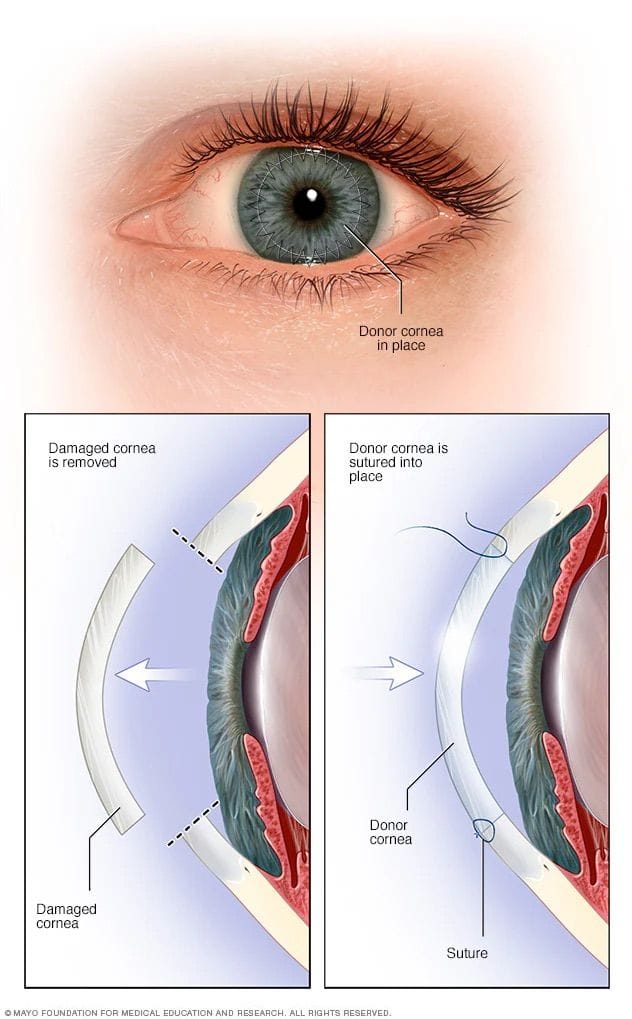Keratitis: Inflammation of the cornea, often caused by infection
Corneal ulcers: Open sores on the cornea, typically from infection or injury
Keratoconus: Thinning and bulging of the cornea into a cone shape
Fuchs' dystrophy: An inherited condition causing corneal swelling and vision loss
Corneal dystrophies: Various inherited disorders affecting corneal structure
Glasses or hard contact lenses can often be used to help improve vision for patients with these conditions.
In more severe cases, a cornea transplant may be necessary, such as when the condition is progressive, or can’t be managed with glasses or contacts.




